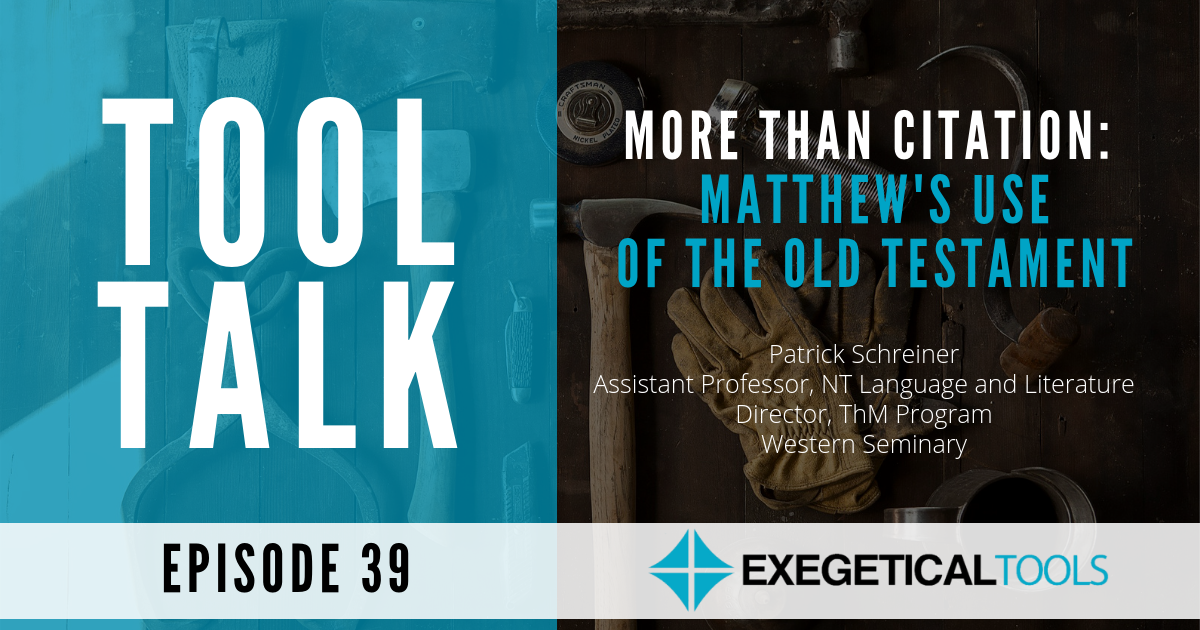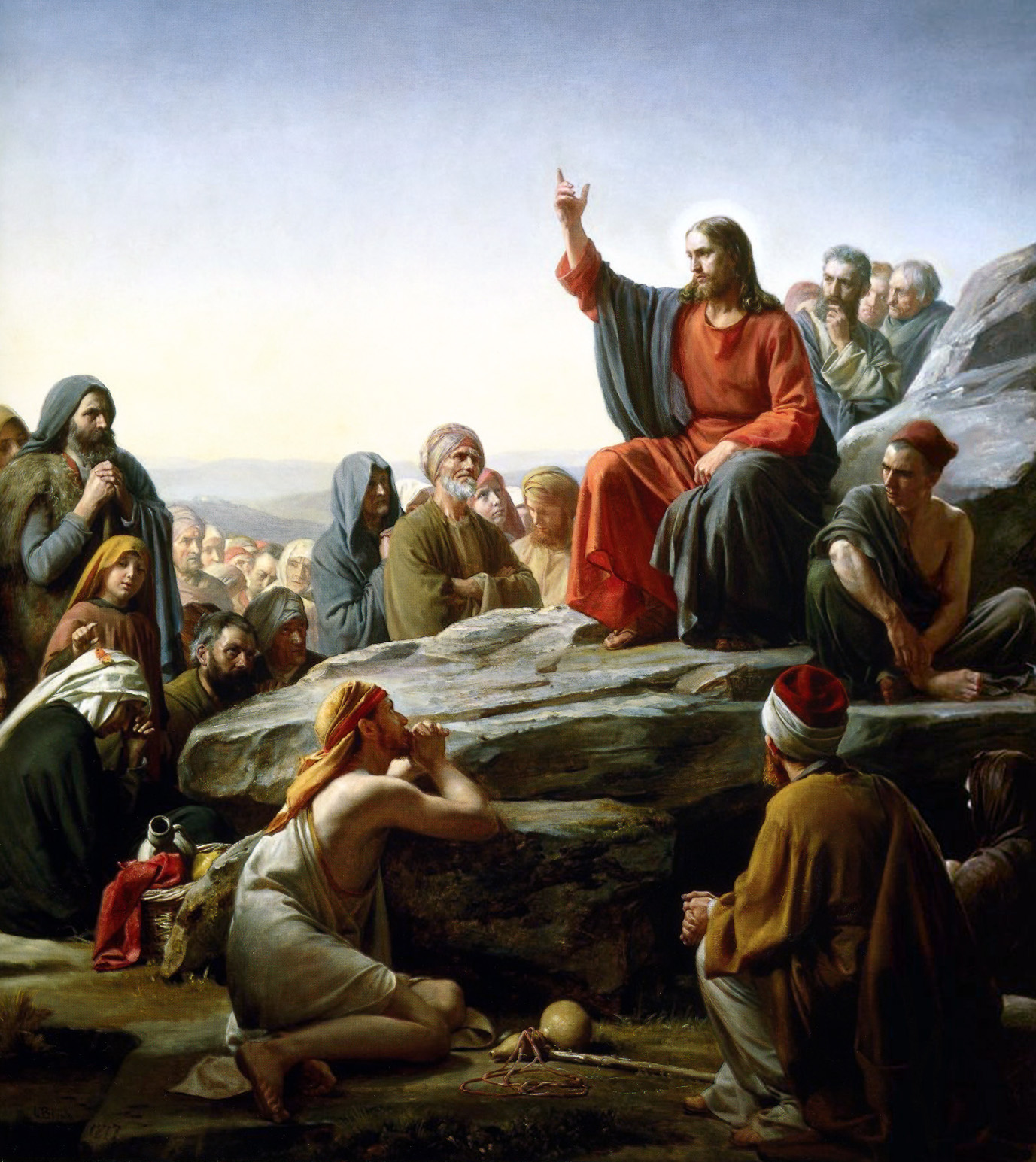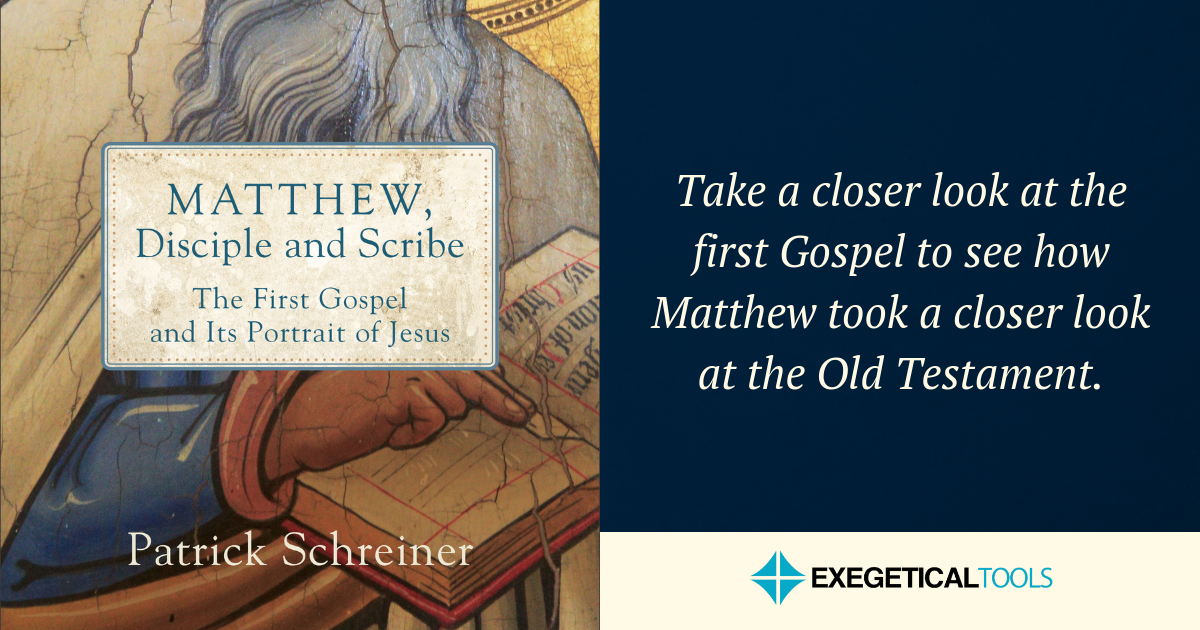Editor’s note: The following is an excerpt (edited for brevity) from Matthew, Disciple and Scribe: The First Gospel and Its Portrait of Jesus (Baker Academic, 2019), new from Patrick Schreiner.
Jesus’s best-known statement about the law comes in the Sermon on the Mount:
Do not think that I have come to abolish the Law or the Prophets; I have not come to abolish them but to fulfill them. For truly, I say to you, until heaven and earth pass away, not an iota, not a dot, will pass from the Law until all is accomplished. (Matt. 5:17–18)
This statement has been the subject of much debate. In what way does he fulfill the law? By extending it? By showing its true intention? By bringing it to its end?
When it comes to Jesus’s teaching, most commentators run to Jesus as a prophet. Nevertheless, much of the confusion concerning Jesus and his attitude toward the law stems from a narrow prophetic lens, forgetting that Matthew has begun the Gospel by announcing that Jesus is king. Significant clarity comes to Jesus’s attitude toward the law if we begin by viewing Jesus as the Davidic king. Looking at the Sermon through the lens of royalty smooths out the rough hills, and separating kingship themes from the νόμος (law) wreaks havoc on our understanding of Jesus’s relationship to the law. Law and wisdom come in tandem in the Scriptures and in a king’s reign.
Clarity emerges by seeing Jesus as fulfilling the law by “living it” as the ideal and wise king.
The king was to be a scribe who wrote the law so that he might fear the Lord and keep his statutes.[1] A wise king would be centered on the law, learning himself how to internalize the law, thereby becoming an embodiment of the law. As Philo says, “Other kings indeed have staves for their scepters, but my scepter is the book of Deuteronomy, . . . a symbol of the irreproachable rulership which is copied after the archetype, the kingly rule of God.”1[2] As the OT continues, each of Israel’s kings and rulers is evaluated on whether he has internalized the Torah.
This internalizing of the law is exactly what Israel was called to do in Deut. 4:6 to become wise: “Keep them and do them, for that will be your wisdom and your understanding in the sight of the peoples, who, when they hear all these statutes, will say, ‘Surely this great nation is a wise and understanding people’” (emphasis added). Matthew, as the discipled scribe, goes to great lengths to show that Jesus not only teaches on the law but also internalizes it and thereby fulfills it.[3] In fact, when Jesus teaches on a topic, Matthew makes sure to emphasize that Jesus performs it as well.
- Jesus teaches his disciples to be meek (5:5), and Matthew describes him as meek and lowly of heart (11:29; 21:5).
- Jesus calls them to not neglect justice, mercy, and faithfulness (9:13; 12:7), and he goes about as king and willingly touches a leper, a hemorrhaging woman, and a girl believed to be dead in the house of a gentile (chaps. 8–9).
- Jesus requires mercy and humility (5:7; 9:13; 12:7; 18:4; 23:12), and the scribe portrays him as merciful and humble. People who need help even cry out to him, “Have mercy” (9:27; 11:29; 15:22; 18:4; 20:30).
- Jesus blesses those who are persecuted for the sake of the kingdom (5:10), and he himself suffers while Pilate declares, “What evil has he done?” (27:23).
- Jesus teaches and demands faithfulness to the Torah (5:17–20; 23:1–2), and Matthew shows the sage faithfully keeping and interpreting the law throughout his life (8:4; 12:1–8; 15:1–20).
- Jesus tells his disciples to turn the other cheek when someone strikes them (5:39), and in the trials Jesus allows others to spit in his face and strike him (26:67; 27:30).
- Jesus teaches his disciples not to give pearls to pigs (7:6), and Jesus at first refuses to speak to the Canaanite woman (15:23), and also when he is at his trial he remains silent at key points (26:63; 27:12–14).
- Jesus calls his disciples to be truthful in their speech (5:37), and while Jesus is on trial, he does affirm that he is the messiah while he is under oath (26:64).
- Jesus teaches his disciples to pray that God’s will be done (6:10). In the garden, when Jesus faces the prospect of death, he uses the same words three times (26:37–44).
- Jesus, as the sage, warns his disciples about mammon and keeping wealth for themselves (6:19). Jesus also does not store up treasure, has nowhere to lay his head (8:20), and denies the opportunity the devil gives to him to seize sovereignty over the whole world (4:8).
- Jesus instructs his disciples to take up their crosses and follow him (16:24), and he also carries his cross (27:31–32).
- Jesus blesses his people who mourn (5:4), so too he mourns and grieves (23:37).
- Jesus calls his disciples to hunger and thirst for righteousness (5:6), and he hungers and thirsts for God’s kingdom to be manifested (9:38).
- Jesus commands his disciples to be pure in heart (5:8), so too he is pure (4:10).
- Jesus teaches his disciples that self-sacrifice will lead to honor and glory (16:24–27; 19:27–30), and he denies himself (4:8) and lays down his life, thereby receiving all authority (25:31–32; 28:18).
- Jesus lives the law as the king showing the people the way of righteousness (3:15), a righteousness that even exceeds that of the scribes and Pharisees (5:20).
Jesus did not come to set aside or nullify the law. Rather, he affirmed it, accomplished it, and brought it to reality. Jesus embodies and lives the law that he delivers in the Sermon and in the rest of the Gospel. The standard responsibility of ancient kings was the task of enacting justice for his people. Moreover, related to his procuring justice for the king’s subjects is the task of executing judgment upon the wicked.[4] Matthew’s dramatization of the law throughout his Gospel cannot be separated from Jesus’s kingship because Matthew’s programmatic statement about Jesus’s ministry is that he “went throughout all Galilee, teaching in their synagogues and proclaiming the gospel of the kingdom and healing every disease and every affliction among the people” (4:23).
The Sermon on the Mount is part of the wise king’s message about the kingdom of heaven. He teaches on the kingdom (Matt. 5–7), and then he heals every disease in anticipation of the kingdom (Matt. 8–9) and enacts the double love command.
Learn more about Matthew’s Gospel on the latest episode of Tool Talk:

[1] The word “fear” and the phrase “fear of the Lord” are employed consistently in the wisdom tradition: Pss. 2:11; 5:7; 9:20; 15:4; 19:9; 22:23, 25; 25:14; 31:19; 33:8, 18; 34:7, 9, 11; 36:1; 40:3; 55:19; 60:4; 61:5; 66:16; 67:7; 72:5; 85:9; 86:11; 90:11; 102:15; 103:11, 13, 17; 111:5, 10; 115:11, 13; 118:4, 6; 119:63, 74, 79, 120; 135:20; 145:19; 147:11; Prov. 1:7, 29; 2:5; 3:7; 8:13; 9:10; 10:27; 14:26–27; 15:16, 33; 16:6; 19:23; 22:4; 23:17; 24:21; Eccles. 3:14; 5:7.
[2] Philo, Spec. Laws 4.160–64, quote from 164.
[3] See the lists in the following two books, from which my list is borrowed: Davies and Allison, Matthew, 3:715–16; Hood, Imitating God in Christ, 77–79.
[4] Jipp, Christ Is King, 216.


